Long before there was a Gospel Art Kit with standardized pictures classified by subject in every ward library and a Gospel Art Book available for home purchase, the church magazines were the chief source of illustrations for classroom use. Beginning in the 1940s, The Instructor began printing gospel pictures on the cover, with the magazine’s name and publication date relegated to a relatively small space that did not obstruct the cover art, allowing the cover to be mounted and used as a classroom illustration. About the same time, that magazine began publishing flannelboard drawings to paint, cut out, and mount, and eventually published centerfold illustrations specifically for use with Sunday School lessons (a chart on the inside cover of every issue coordinated magazine illustrations with current lessons). Before the 1950s, though, every teacher was more or less on her own to find materials to enliven classroom stories.
One spectacular exception occurred in The Children’s Friend of 1908.
To appreciate the novelty of that year’s exception, consider the general visual state of the church magazines from that era:
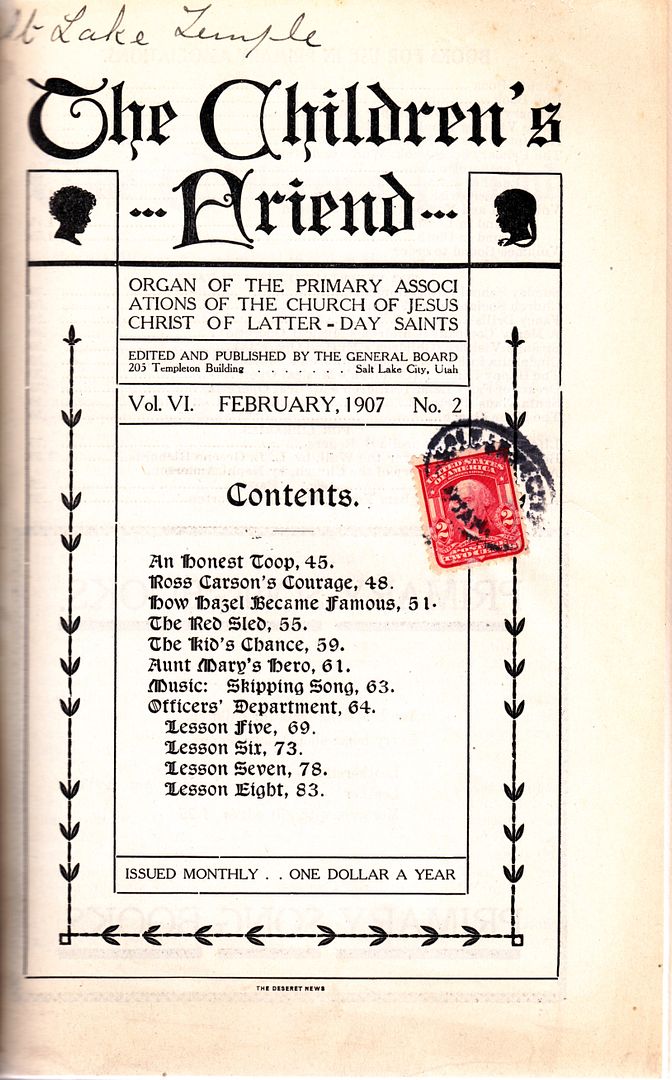 None of the church magazines had the capability of printing color covers. The Children’s Friend, for instance, had an exceedingly plain cover. (All the covers for the 1908 issues were removed before the magazines were bound, but here is a cover from 1907, complete with the 2¢ stamp that carried this issue to the library in the Salt Lake Temple. Even inside the magazine, there were no illustrations at all. By 1909, the Children’s Friend was printing a very few black-and-white reproductions of religious artwork.
None of the church magazines had the capability of printing color covers. The Children’s Friend, for instance, had an exceedingly plain cover. (All the covers for the 1908 issues were removed before the magazines were bound, but here is a cover from 1907, complete with the 2¢ stamp that carried this issue to the library in the Salt Lake Temple. Even inside the magazine, there were no illustrations at all. By 1909, the Children’s Friend was printing a very few black-and-white reproductions of religious artwork.
.
.
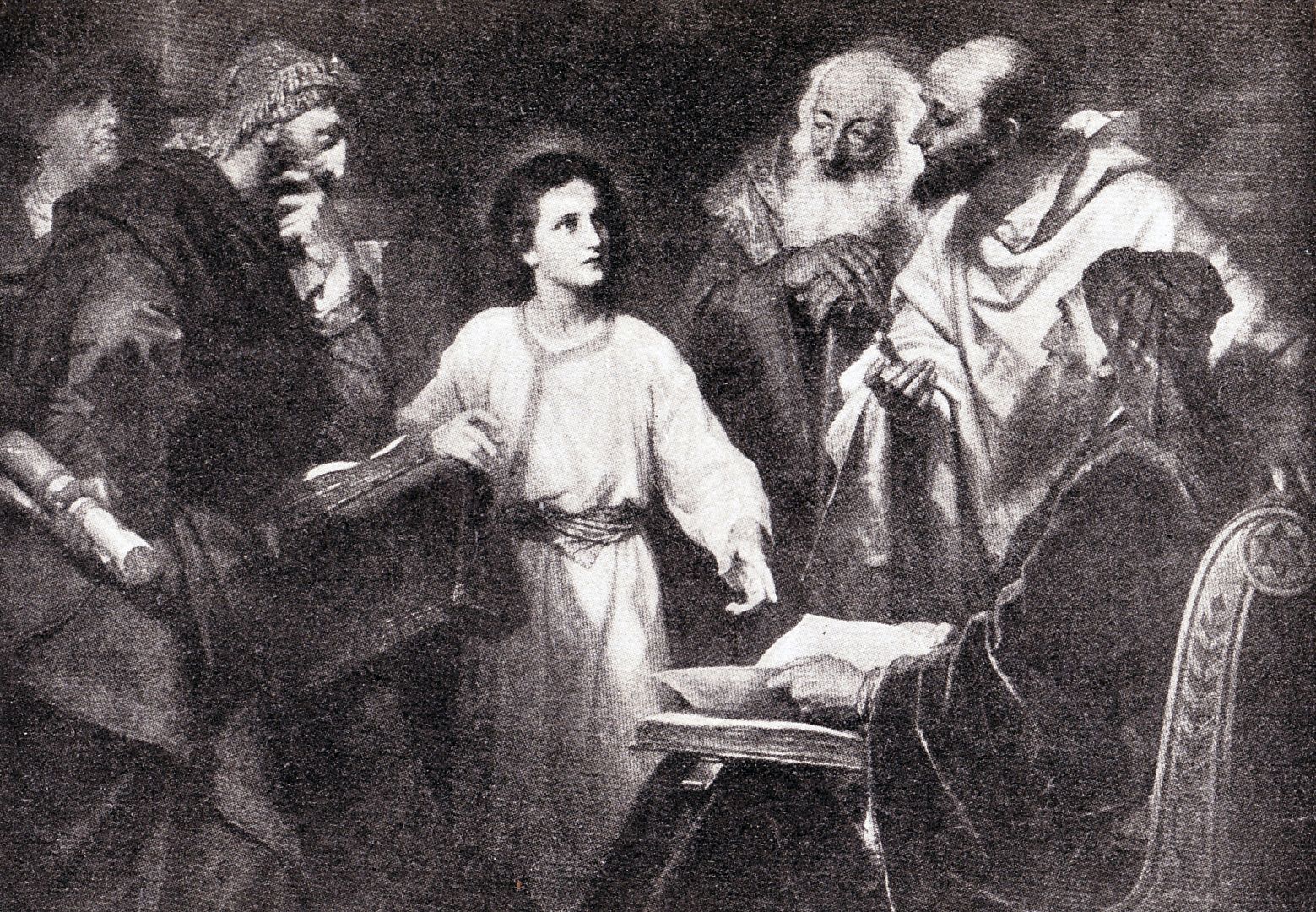
Heinrich Hofmann, “Christ in the Temple”
.
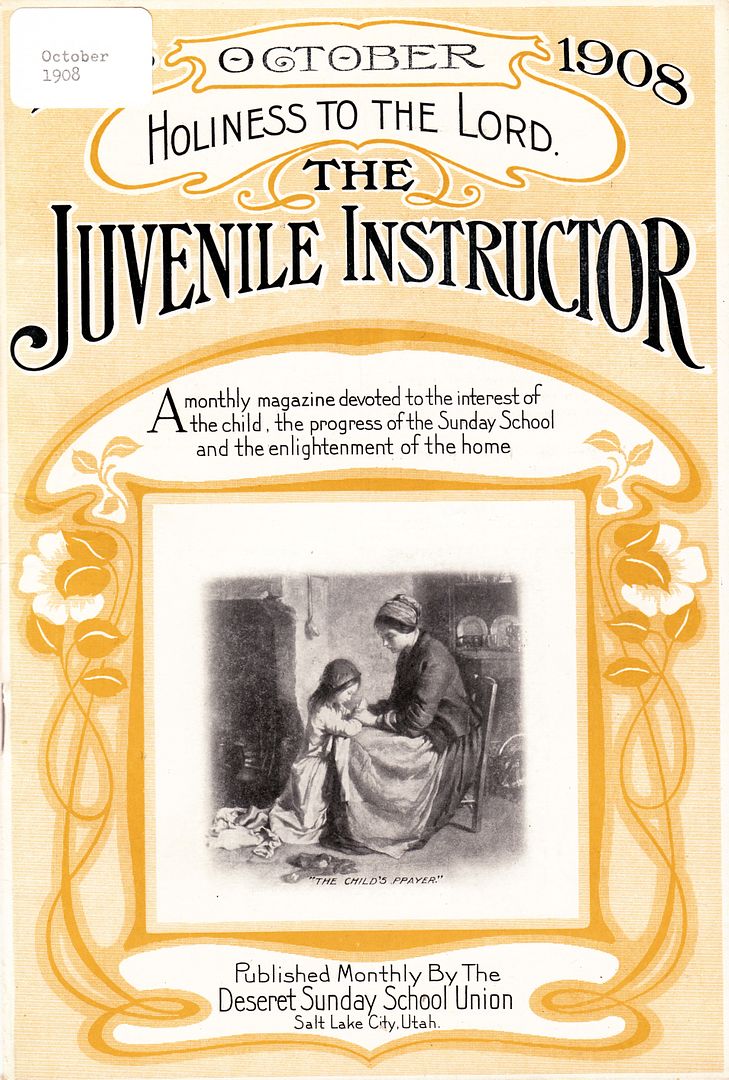 The Juvenile Instructor used color ink on its cover, framing small black-and-white pictures, some with a religious theme, many just small portraits of children.
The Juvenile Instructor used color ink on its cover, framing small black-and-white pictures, some with a religious theme, many just small portraits of children. 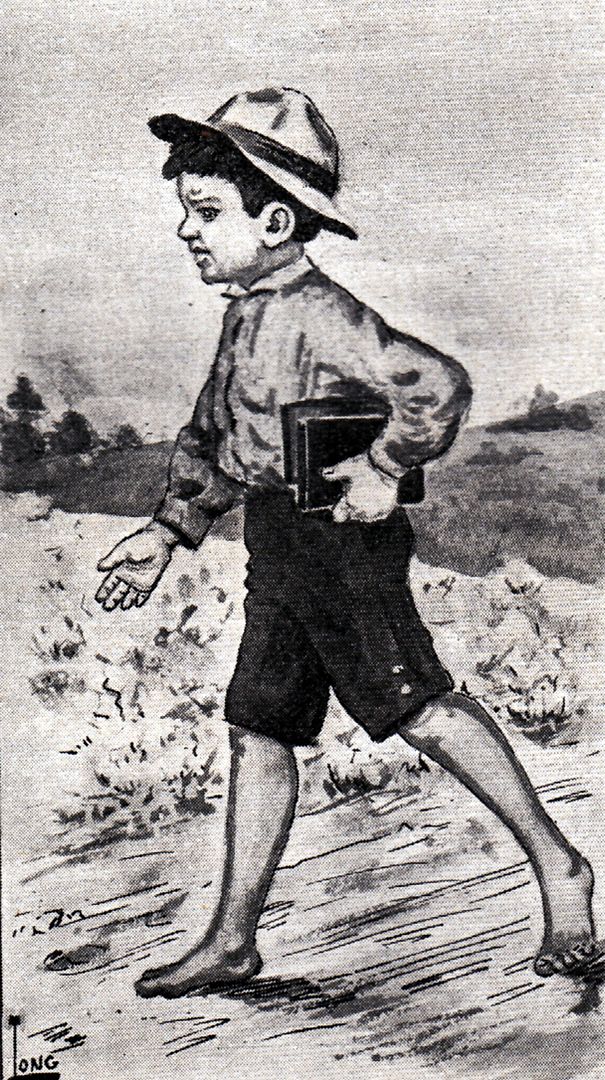
 Each issue carried perhaps a dozen internal illustrations, both black-and-white photos and black-and-white drawings, very few of which could have been used in the classroom (this photo of Book of Mormon pages might have been so used; the more numerous story illustrations would not have been). Most issues of the Juvenile Instructor also featured one or two black-and-white reproductions of quality art pieces:
Each issue carried perhaps a dozen internal illustrations, both black-and-white photos and black-and-white drawings, very few of which could have been used in the classroom (this photo of Book of Mormon pages might have been so used; the more numerous story illustrations would not have been). Most issues of the Juvenile Instructor also featured one or two black-and-white reproductions of quality art pieces:
.
.
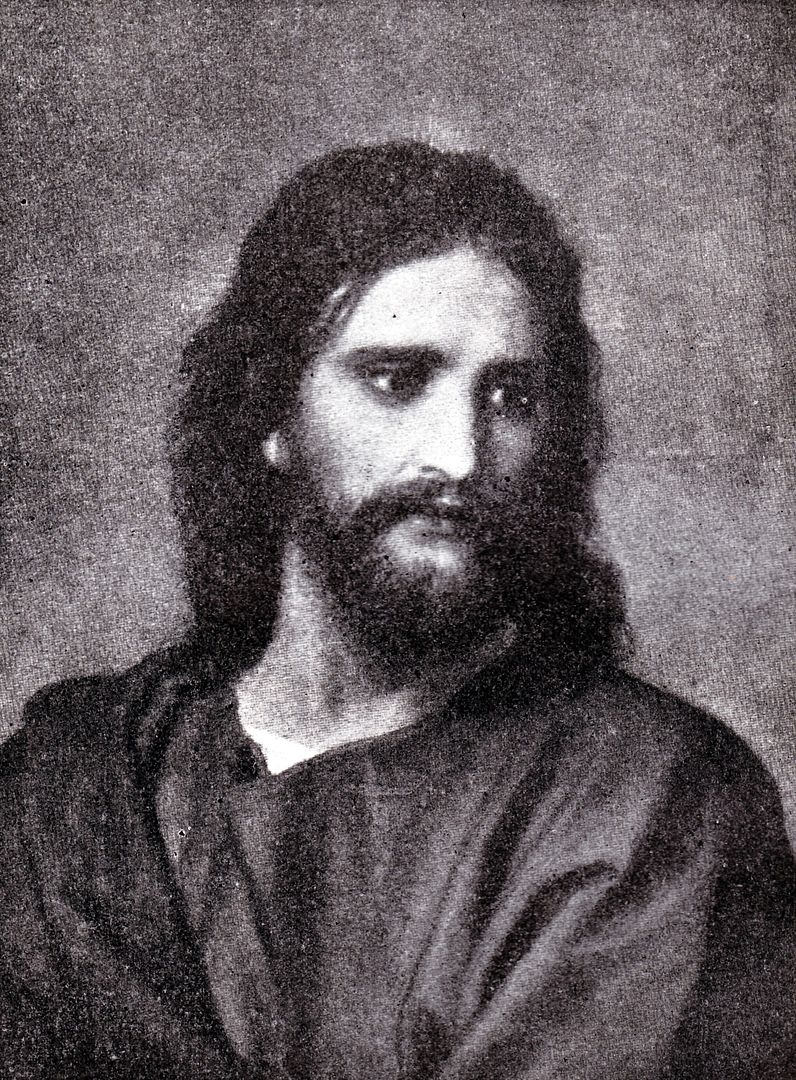
Heinrich Hofmann, “Head of Christ”
.
We have already seen illustrations of the kinds of black-and-white pictures used in the Young Woman’s Journal of this era; on the young men’s side, The Improvement Era similarly published black-and-white photographs of church subjects, and black-and-white reproductions of artworks.
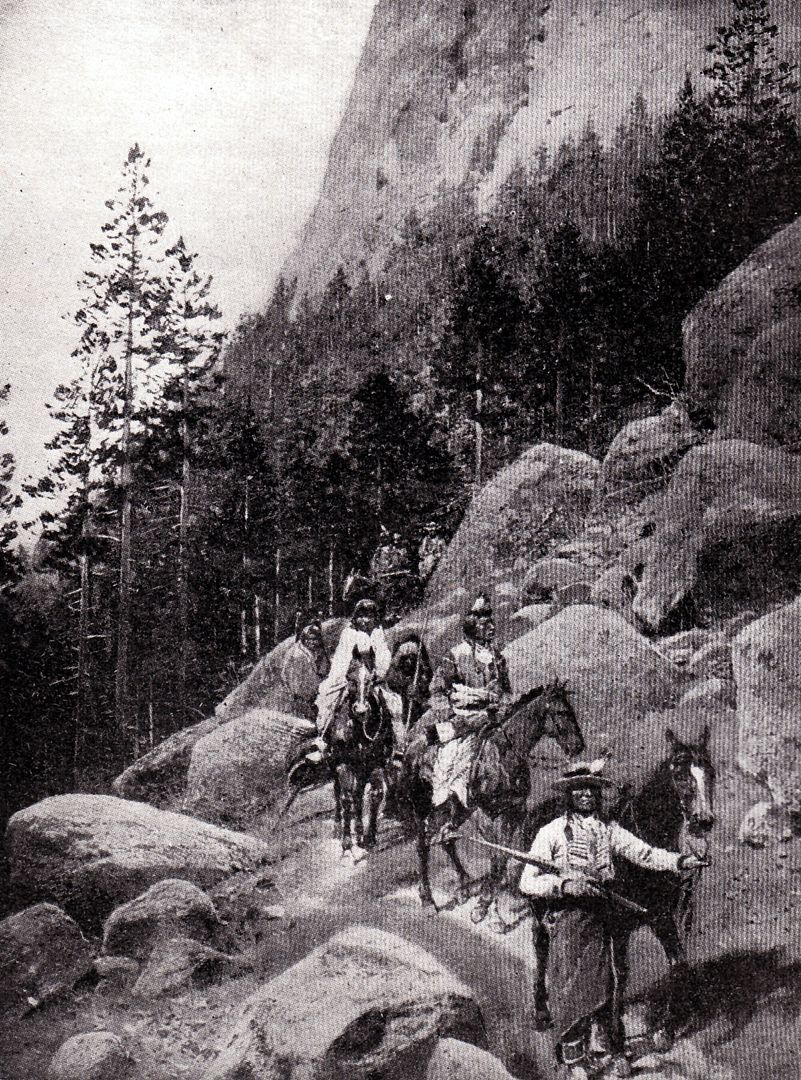
Henry Farney, “Mountain Trail”
.
So with that as prelude, knowing what Latter-day Saint readers expected of their magazines in the way of illustration, imagine the startling effect produced by the Children’s Friend when, in 1908, it published a full color illustration in every issue! So far as I have determined, these are the first color illustrations used by the church. They do not appear to have been printed locally, but obtained pre-printed from a supply house in New York City, to be inserted in each copy of the Children’s Friend as it was bound.
These paintings are all from illustrations (a phenomenal 400 paintings!) of the life of Christ produced by J. James Tissot (1836-1902), a French painter of society and wealth who, at the age of 50, made an abrupt change and devoted the last years of his life to illustrating first the life of Christ, and then scenes from the Old Testament. His style is not much appreciated in our generation, but in the early years of the 20th century, when these pictures appeared in our children’s magazine, he was wildly popular.
I think opening the magazine to see one of these paintings, month after month, must have been to our grandparents as dazzling as Dorothy’s view of a Technicolor Land of Oz after leaving her black-and-white Kansas, or as the final scenes in Schindler’s List where black-and-white returns to color with the lighting of the Sabbath candle.
From the 1908 Children’s Friend:
.

Saint Joseph Seeks a Lodging at Bethlehem.
St. Luke ii. 4. “And Joseph also went up from Galilee, out of the city of Nazareth, into Judea,
unto the city of David, which is called Bethlehem.”
.

The Presentation of Jesus in the Temple.
St. Luke ii. 28. “Then took he him up in his arms, and blessed God.”
.
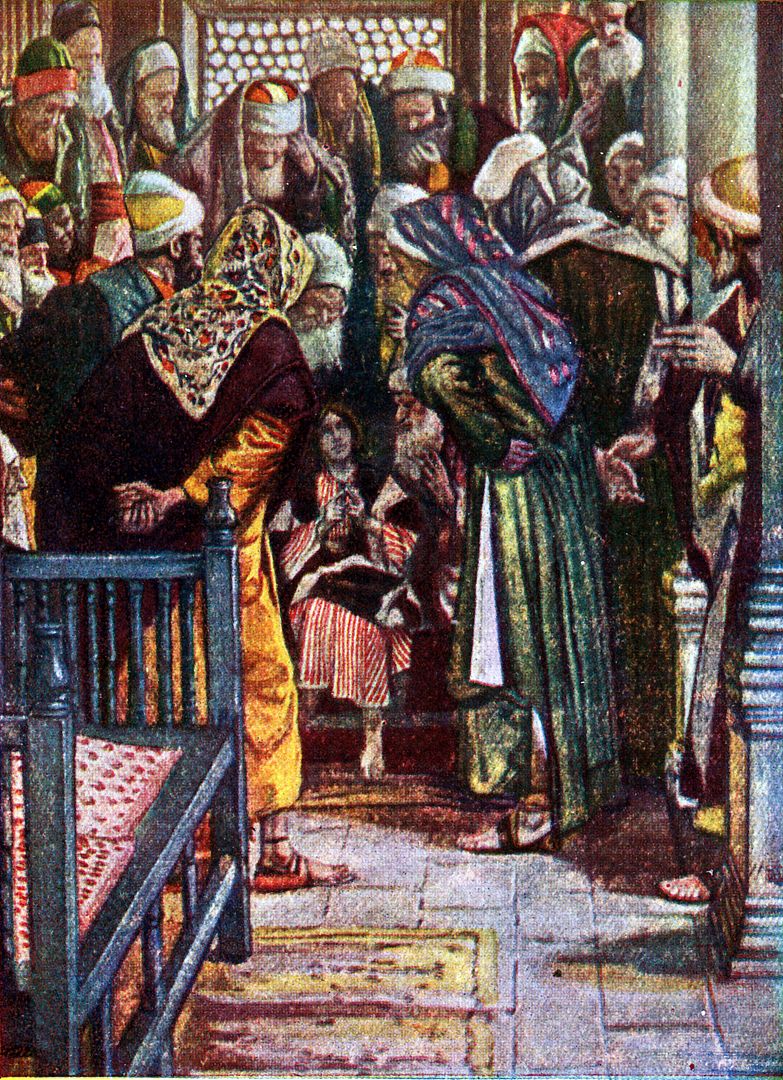
Jesus Sitting in the Midst of the Doctors.
St. Luke ii. 46. “They found him in the temple, sitting in the midst of the doctors.”
.

Jesus Found in the Temple.
St. Luke ii. 49. “And he said unto them, How is it that ye sought me?
wist ye not that I must be about my Father’s business?”
.

First Miraculous Draught of Fishes.
St. Luke v. 6. “And when they had this done, they inclosed a great multitude of fishes; and their net brake.”
.

Christ Sendeth Out Seventy Two-by-Two
St. Luke x. 1. “After these things the Lord appointed other seventy also, and sent them two and two.”
.

The Blind Man Washes in the Pool of Siloam.
St. John ix. 7. “He went his way therefore, and washed, and came seeing.”
.

The Rich Young Man Went Away Sorrowful.
St. Matthew xix, 22. “But when the young man heard that saying,
he went away sorrowful for he had great possessions.
.

Christ Driving Out Those that Sold in the Temple.
St. Matthew xxi, 12. “And Jesus went into the temple of God,
and cast out all them that sold and bought in the temple.”
.

The Palsied Man Let Down through the Roof.
St. Mark ii. 4. “They uncovered the roof where he was; and when they had broken it up they let down the bed wherein the sick of the palsy lay.”
.
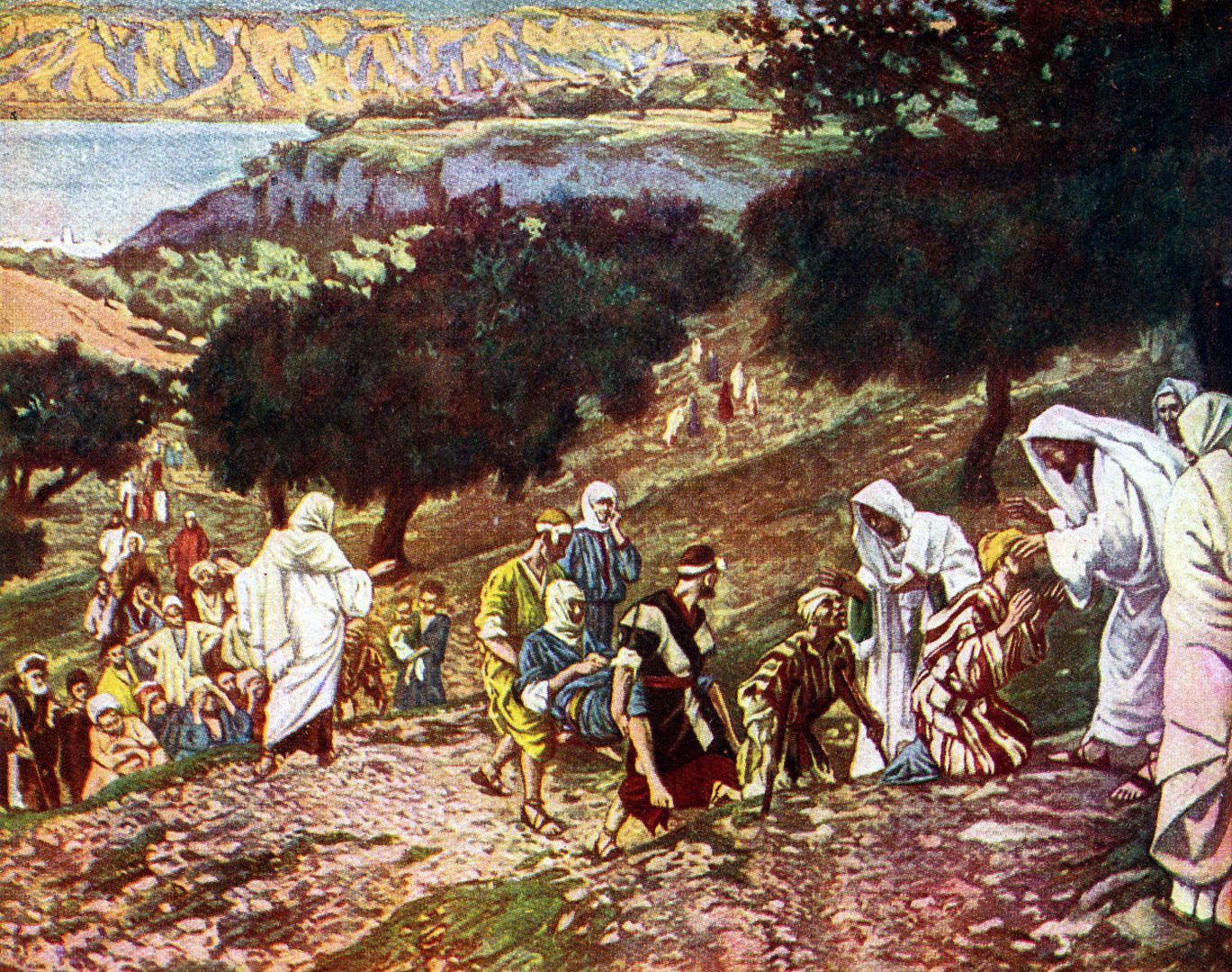
Jesus Healing the Blind and Lame.
St. Matthew xv, 30. “And great multitudes came unto him,
having with them those that were lame, blind, dumb, maimed.”
.

Miracle of the Loaves and Fishes.
St. John vi, II. “And Jesus took the loaves; and when he had given thanks,
He distributed to the disciples, and the disciples to them that were sat down.”
Continue reading at the original source →



